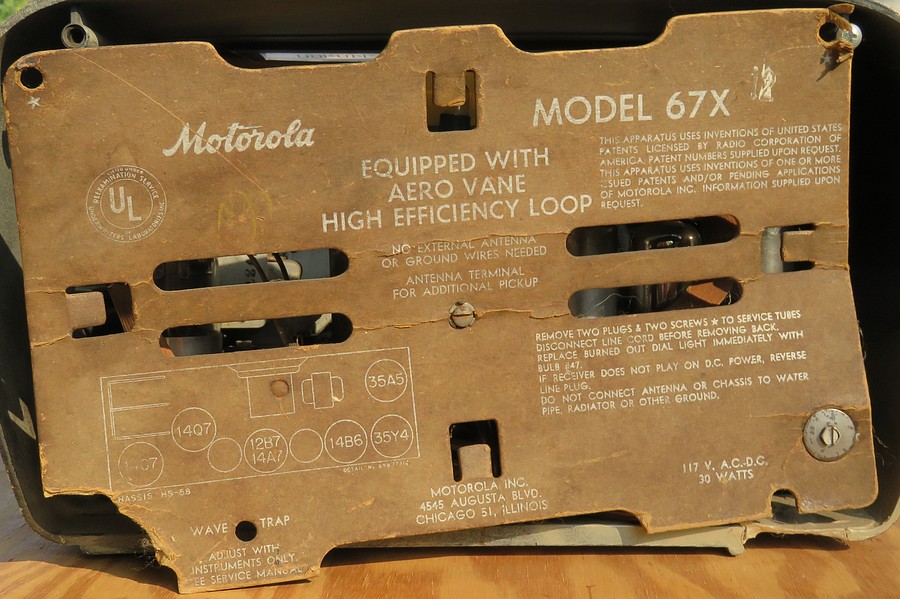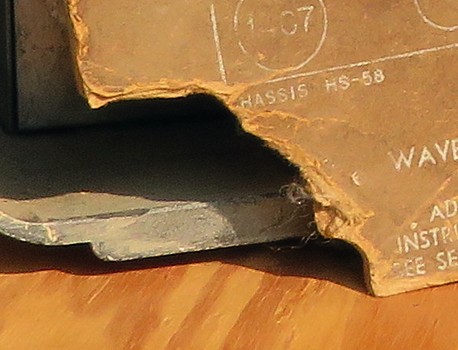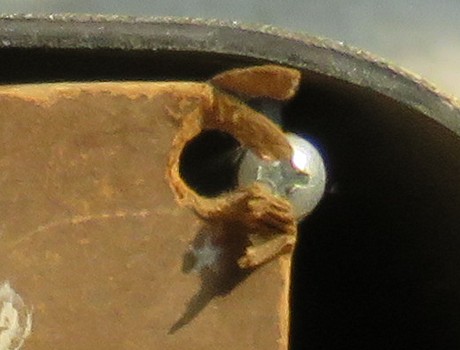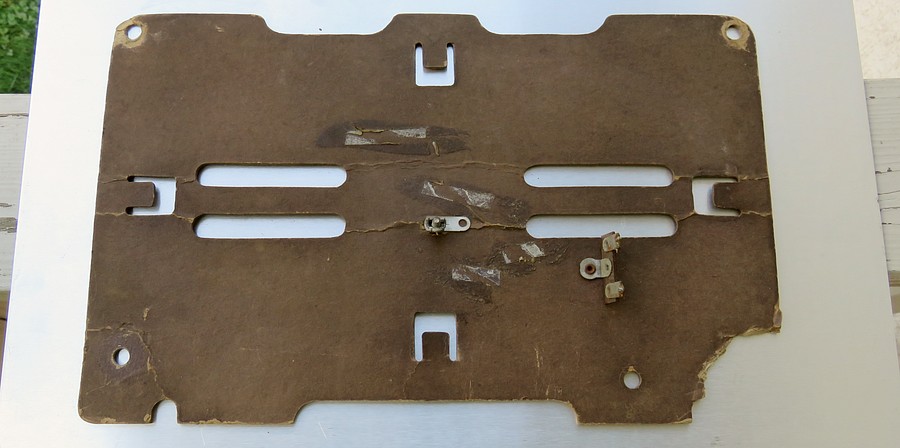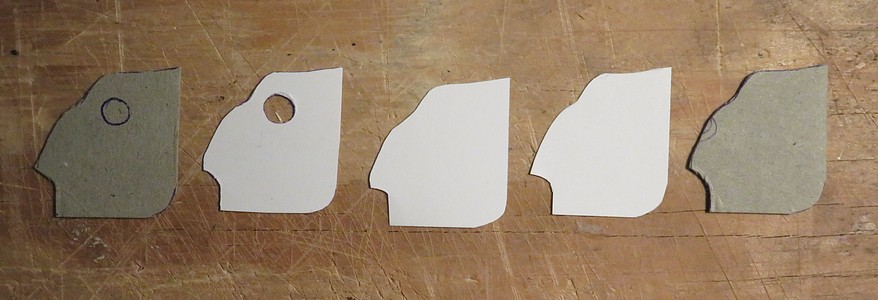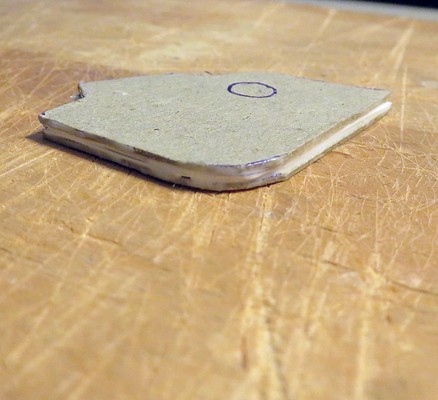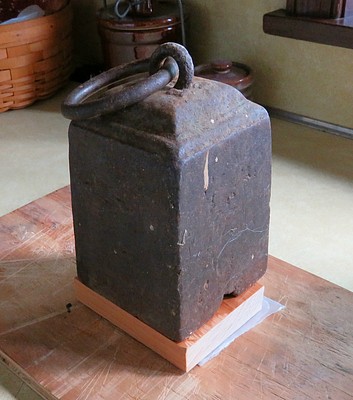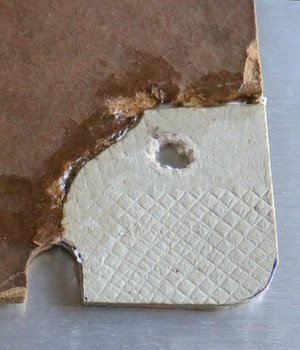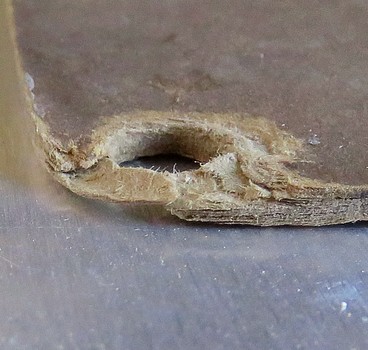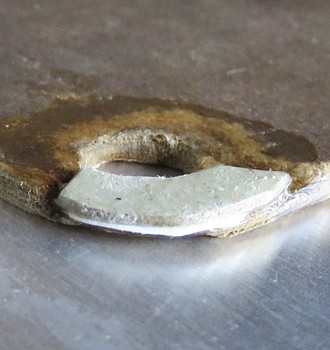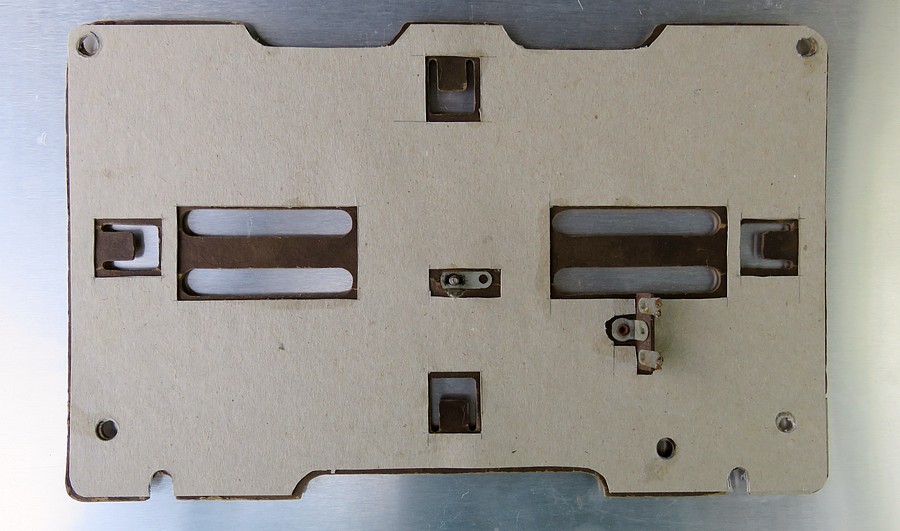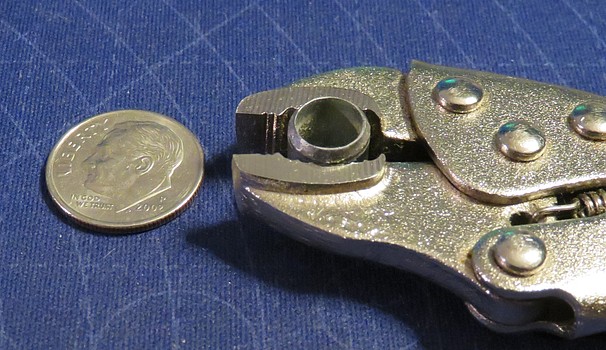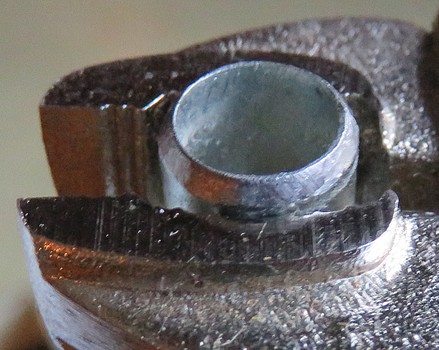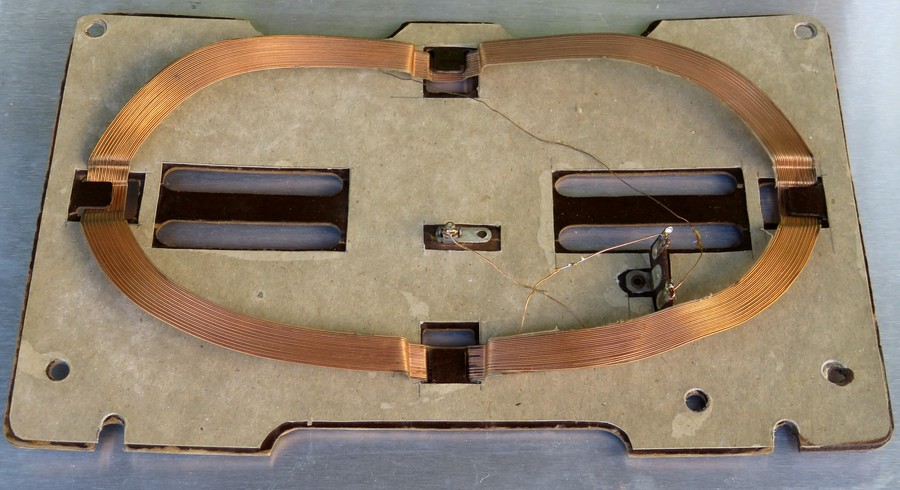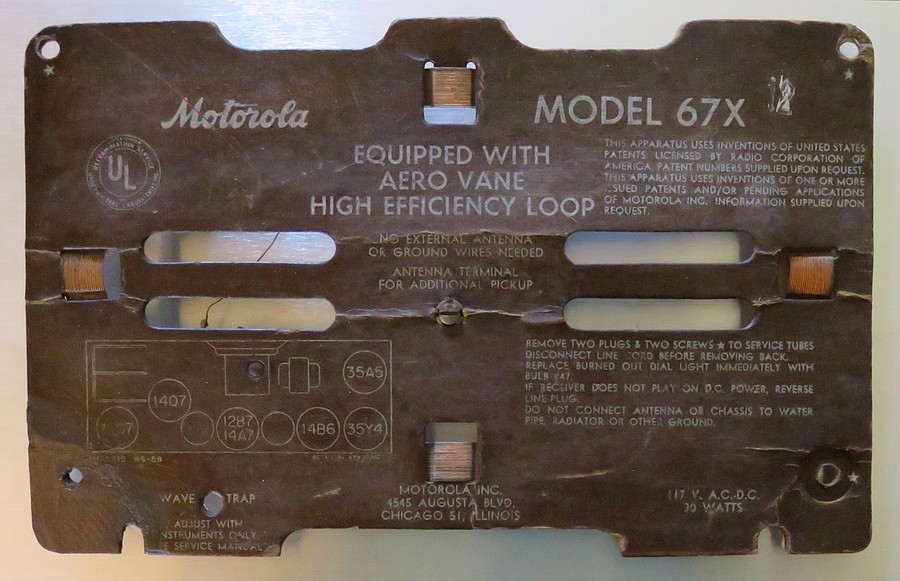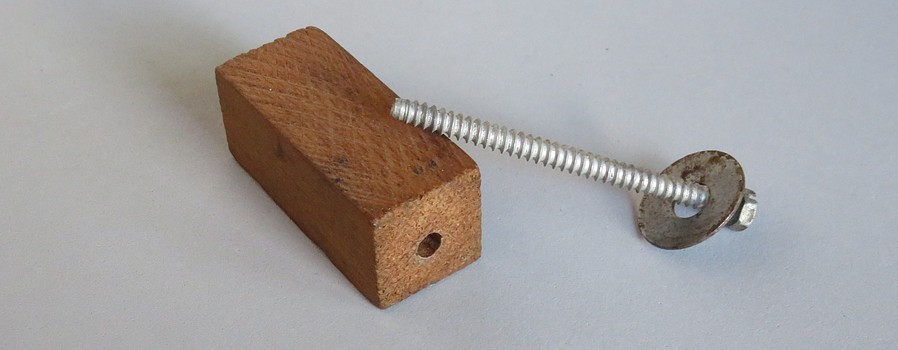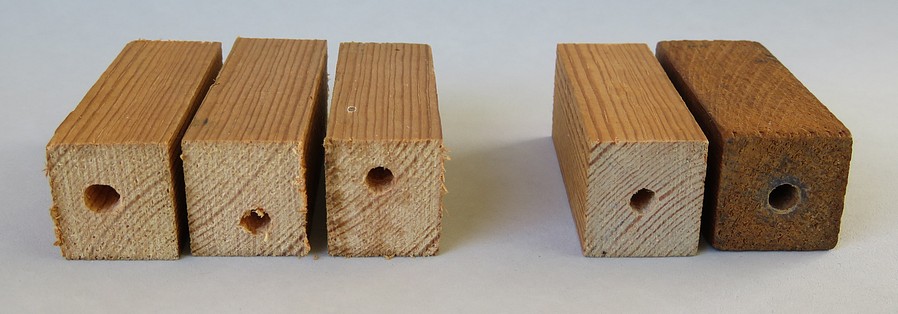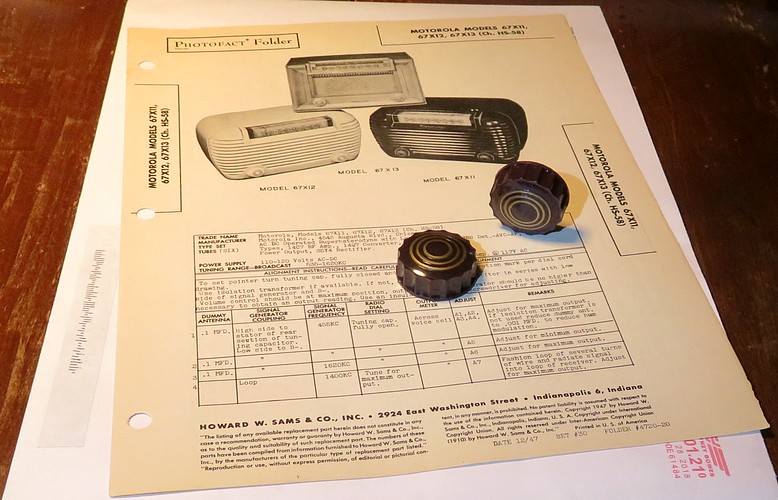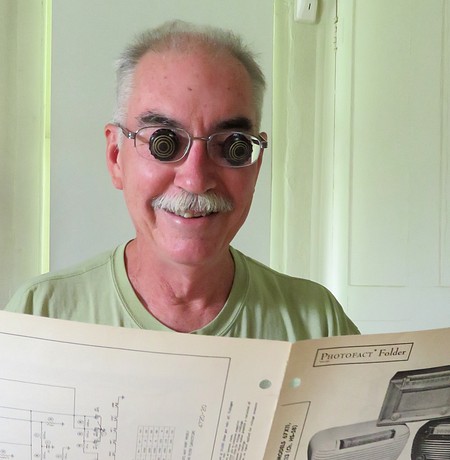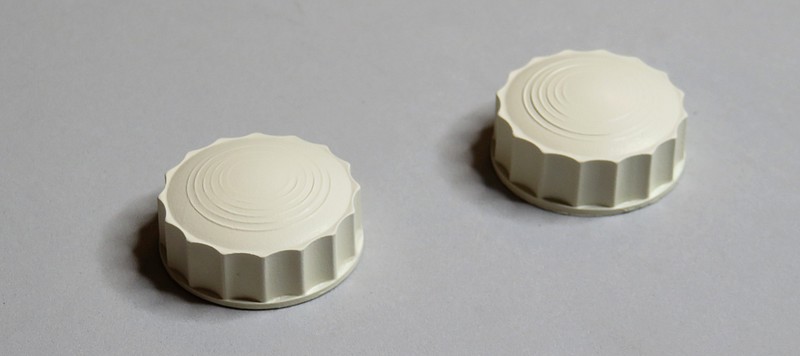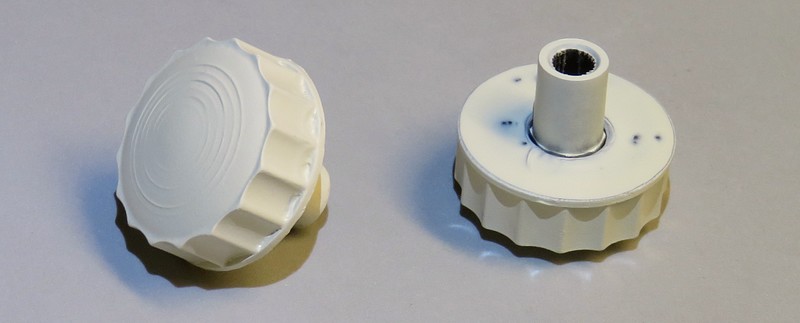 |
1947 Motorola Model 67-X |
 |
|
|
|
|
|
|
|
|
|
|
|
|
The back wasn't in good shape. At least it was
still there, held on by a single screw on the bottom right.
Next to the model number 67X is the number 12. This designates the
ivory colored case. The brown version was "11." |
|
|
|
|
Like the rest of the radio, the back is 71 years
old. The "AERO VANE HIGH EFFICIENCY LOOP" antenna is supposed to be
attached to it.
See that screw in the corner on the right? That's a good way to
crack a radio cabinet. The radio wasn't made with that screw in it. |
|
|
|
| It was washed off
in the laundry tub. When it was good and wet it was placed
between some boards and a weighted metal plate and left out
in the hot sun. The next day it was more or less flat. |
|
|
|
|
|
|
|
|
I see faces. Cartoon faces. What are these for? |
|
|
|
|
|
|
|
To repair the missing corner a patch was made.
Cardboard outsides, with paper added inside till the thickness was the same
as the back. Then it was all glued together in a sandwich. So that
the glue wouldn't add to the thickness, a ten pound weight was left
on it overnight. |
|
|
|
|
|
|
|
|
The patch inserted. Center and right, a damaged
screw hole was reinforced. |
|
|
|
|
| The back was flat but
flimsy. If you took it outside into the humidity it quickly
became limp. A thin piece of cardboard was glued to the
inside with carpenters glue. According to the glue bottle,
it dries harder than wood. Weights were placed on it to make sure it dried flat. The
cardboard also reinforced the patch in the corner. |
|
|
|
|
|
|
|
| Andrea made me this
tool to make the holes in the cardboard. It was a piece of a
metal tube that she took a file to. To use it, you turn it
over, press it down onto the cardboard and twist it back and
forth till it cuts the hole. |
|
|
|
It was given a coat of Polyurethane.
The next day, the antenna was tested and installed. |
|
|
|
|
|
It still looks like crap but now it is very hard. I would have bought a
reproduction but nobody makes one. |
|
|
|
|
|
| Two of these are needed
to hold the back on. The radio came with only one. Where is
the other? Grandpa found it on the floor in 1955. Not
knowing where it came from, he put it in the junk drawer. |
|
|
|
|
|
On the left is what you get
when you don't have a drill press. No matter how plumb you
think the drill is, it's not. The drill bit starts out
in the center and comes out the other side off-center.
Then I had an idea. Pilot holes were drilled in the
center of both sides going halfway in, the logic being that
if they were crooked, they would only be half as crooked.
Somehow the holes met up, or almost met up. When the larger
bit went through, it was guided by the pilot holes and
exited the pilot hole on the other side. |
|
|
| |
|
|
While I was making the
wooden standoff, the mailman came and brought a Sam's
Photofact Folder and two reproduction knobs! I was so
happy, I
gave him a tip: "Don't smoke in bed."
I had scoured the Internet looking for Motorola knobs and
these were the only ones out there. For some reason they are
very rare. |
|
|
|
|
|
|
| According to the Sam's
Folder, the burned up resistor is part number 31 - 100 Ohms.
The Folder (actually just 4 pages on a single sheet of
paper) is dated December 1947, same as the radio. |
|
|
|
|
|
Obviously I had to paint the knobs. I was afraid
to color in the gold circles. |
|
|
|
|
|
|
Later, I found they also needed shafts, so I gave them the
shaft. You might ask, "Where did you get knob shafts??" An obvious
source would be to cut the shafts off some junk knobs, but
these came from Julie and Marty McCall. They travel the East
Coast selling knobs at radio shows and we met them at
Kutztown, PA.
|
|
| They GAVE
them to me. They don't
have a website but I found an article about them |
here. |
|
|
|
|
|
I drilled holes into the knobs with a Dremel
grinding wheel to insert the shafts. |
|
|
|
| |
|
|
| |
